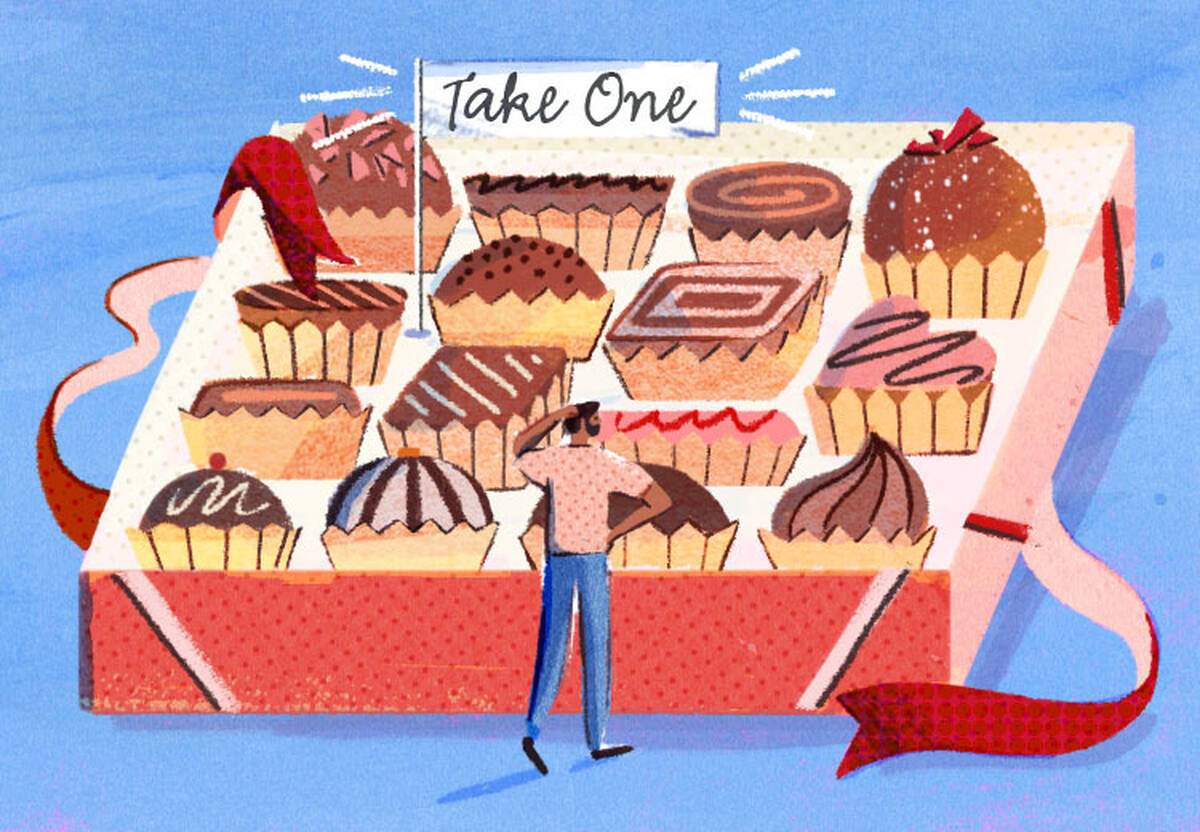Featured Faculty
Professor of Marketing
John D. Gray Professor of Marketing
Professor of Marketing

Morgan Ramberg
Planning to buy a cell phone online? Give yourself some time to peruse. Amazon’s “Cell Phones & Accessories” category alone contains over 82 million products. And the proliferation of options is not limited to retail. Anyone purchasing healthcare plans, car insurance, or financial services is inundated with choices.
To some extent, this is wonderful.
“Having a choice is a very basic need,” says Ulf Bockenholt, a professor of marketing at Kellogg. When we are in a position to choose something over another, it helps us to feel autonomous and satisfied.
But it is possible to have too much of a good thing.
Bockenholt, along with his Kellogg marketing colleagues Alexander Chernev, a professor, and Blakeley McShane, an associate professor, recently studied a phenomenon called “choice overload”—the negative psychological, emotional, and behavioral effects of having too many options to choose from.
Choice overload can leave you dissatisfied with the choice you made, what is often described as “buyer’s remorse.” Or it can even lead to behavioral paralysis, which Bockenholt explains as a situation “where people are faced with so many choices that they can’t decide among them and make no choice at all.”
While there has previously been some debate about whether choice overload exists, the researchers analyzed a trove of previous studies to find strong evidence for the phenomenon.
Across the studies, the researchers found that four broad factors were influential in explaining when choice overload might occur.
They also identify four factors that increase a decision-maker’s chances of feeling overburdened and dissatisfied by choices—factors that companies and policymakers looking to mitigate these feelings would do well to keep in mind.
“It’s about creating better choice architecture to help people deal with a larger number of options more comfortably,” Chernev says.
The Choice-Overload Controversy
Earlier economic theory, as well as conventional wisdom, initially suggested that we are always better off with more options. “If you think about strict models of economic rationality, more options can only be better, because you can just ignore the ones you don’t like,” says McShane.
Then a wave of research over the past two decades found evidence that having too many choices can hurt our ability to make decisions, as well as our satisfaction with our eventual choice. Still, choice overload has remained controversial among researchers and a prior meta-analysis did not find evidence in favor of the phenomenon.
“A meta-analysis looks at many studies at once and tries to extract some coherent results you may not be able to see by looking at each study separately,” Bockenholt says.
Kellogg researchers believed that to be meaningful, a meta-analysis should isolate the impact of different factors that influence choice overload while at the same time controlling for the different ways choice overload is measured.
“You can ask whether choice overload exists across circumstances,” Chernev says. “That is, does having too many choices always make people worse off? Or you can ask when choice overload is more likely to occur. There may be many situations in which it happens and others in which it doesn’t, so the question of whether it exists becomes meaningless and the question of when it occurs much more important.”
Based on that insight, the team conducted new meta-analyses to examine the circumstances under which choice overload is more likely to occur.
Four Factors Predict Choice Overload
The researchers made several predictions about which factors might affect choice overload. Then they put their predictions to the test in two meta-analyses, which drew on data from 57 earlier studies represented in 21 papers. These earlier studies investigated the phenomenon as it pertained to everything from sandwiches to blenders to vacation packages.
Across the studies, the researchers found that four broad factors were influential in explaining when choice overload might occur. Specifically, these four factors were:
The researchers also found that some ways of measuring the negative impact on decision-making seem to be less reliable than others. Namely, perhaps the most dramatic measure—paralysis, or the likelihood of someone simply refusing to make any decision at all—is “wildly erratic” across the range of studies and scenarios, says McShane. This suggests that it may be a less stable way of assessing choice overload than, say, measuring how much people want to switch options or regret with their final choice.
Build Better Choice Architecture
The researchers hope their findings can clear up some confusion about whether choice overload exists—as well as help retailers, policymakers, and others package decisions in ways that help consumers.
“Our findings apply to any area where we make choices,” Chernev says. “They help you understand whether you’re likely to have a situation with choice overload or not, and how to build better choice sets and circumstances.”
Of course, the takeaway for retailers is not simply to offer fewer items. People like variety, Bockenholt says. “But it’s critical to be aware of the conditions we found to provide a pleasant consumer experience.”
That might mean helping customers structure their search, assisting them in streamlining choices and understanding their preferences. For example, a car dealer might help customers understand price-quality trade-offs and preferences related to body styles, such as sedans versus SUVs.
Businesses can also try to reduce decision-related pressures on customers, such as trading the hard sell for an approach that gives them time to choose, or offering a post-purchase period in which buyers can change their minds.
Policymakers, too, can take a similar approach to choice architecture for areas such as the Affordable Care Act–mandated insurance exchanges or Medicare Part D Prescription Drug program. Simplifying choices and decision tasks could reduce choice overload, while still letting people choose the option that best fits their needs and their budget.
“We show that the effect of choice overload is real, along with the scenarios where it’s more likely to occur,” Bockenholt says.
Now retailers and others can use these findings to help reduce the challenge of choice.